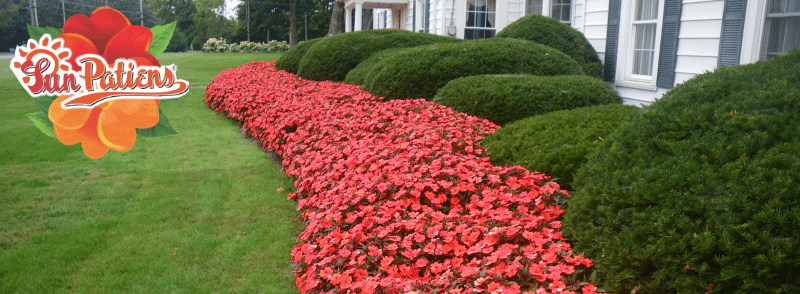
Spotlight on Innovation: SunPatiens®
Q&A with Mark Seguin
{Sponsored} 2006 was a pretty memorable year. Google purchased YouTube for a reported $1.65 billion in stock. NASA launched the New Horizons probe. Barry Bonds hit his 715th homerun to break Babe Ruth’s long-standing record.
 Perhaps the most memorable, at least for the horticulture industry, was Sakata Seed America’s commercial introduction of SunPatiens, a ground-breaking line of interspecific impatiens.
Perhaps the most memorable, at least for the horticulture industry, was Sakata Seed America’s commercial introduction of SunPatiens, a ground-breaking line of interspecific impatiens.
SunPatiens was — and still is — known for its continuous flowering, adaptable features and consumer-friendly performance.
That brings us to 2017, where SunPatiens is one of the most award winning and recognized series of flowering annuals in the world.
We sat down with Mark Seguin, global marketing manager of vegetative products, to talk about the past, present and promising future of SunPatiens.
GPN: Can you shed a little light on the origin of SunPatiens?
Mark Seguin: SunPatiens has a very interesting history of development. The original species, which serves as the basis for the bloodline, was discovered by Sakata breeders in Indonesia in the 1990s.
In 1993, Japan was one of 168 countries to sign the Convention on Biological Diversity (CBD). This multilateral treaty serves to develop conservation and sustainable use of indigenous plants, as well as fair and equitable sharing of benefits arising from a country’s genetic resources.
Sakata Seed Corporation and the Indonesian government signed an agreement based on the principles of the CBD for commercial development of these unique plants; a first for the flowers industry. After years of refinement, research and development, SunPatiens was launched in 2006. A portion of the royalty collected for each SunPatiens cutting sold goes back to the Indonesian government to support their conservation efforts.
GPN: How does SunPatiens differ from other interspecific impatiens on the market?
MS: While initial appearance resembles a typical New Guinea Impatiens, SunPatiens genetics feature a more complex genealogy. Years of breeding work resulted in a more aggressive root system, thicker leaves, flower petals and stems, which provide greater tolerance to stressful conditions. Plus, unlike a mutation process, the traditional breeding techniques utilized by Sakata allows for new characteristics from other species to be incorporated into new varieties and future generations of SunPatiens.
GPN: What is contributing to the extraordinary growth of SunPatiens in the marketplace?
MS: The product delivers on the expectations of consumers. It’s easy to grow and provides continuous color for three seasons. Given its full-sun to shade versatility, natural disease resistance and ability to thrive under the most stressful conditions, the end results are happy gardeners making repeat purchases year after year and a higher sell- through at retail.
It’s nearly impossible to sustain the incredible sales growth SunPatiens has enjoyed without strong customer satisfaction. Our market research indicates that 8 out of 10 people who grow them would recommend SunPatiens to a friend.
GPN: What advice would you offer to first-time growers of SunPatiens?
MS: Rule No. 1 is SunPatiens are not New Guinea Impatiens (NGI), therefore growing practices are not identical. Most growers have vast experience with growing NGIs but if they incorporate these practices with growing SunPatiens their final results are typically less than ideal.
Unlike New Guineas, SunPatiens can tolerate moderate to severe wilting without the loss of emerging flowers or bud abortion, and the water stress helps condition and strengthen the plants for its transition to the landscape or home garden. For this reason, I recommend that growers avoid excessive stem-stretch and minimize the use of plant growth regulators (PGRs) by growing SunPatiens under high light conditions and allow the plants to dry down between irrigations.
By far the biggest concern I share with growing SunPatiens is the overutilization of PGRs. Without proper care and conditions, SunPatiens can quickly grow beyond expectations and growers often react by liberal use of PGRs. SunPatiens are very reactive to PGR applications and aggressive treatments can result in stalled or near zero-growth for the end-user. This highly negative condition runs counter to the aggressive performance consumers have come to expect from SunPatiens. A successful gardening experience is the ultimate goal and it’s critical we don’t undermine the promise the SunPatiens brand has established in the marketplace.
For information about SunPatiens, visit www.sunpatiens.com or contact your local Sakata distributor.
Facebook: www.facebook.com/sunpatiens
Pinterest: www.pinterest.com/FlowersBySakata
Twitter: @FlowersBySakata
C. Sakata 2017


 Video Library
Video Library 




















